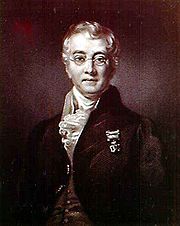
Bell's phenomenon
Encyclopedia

Medical sign
A medical sign is an objective indication of some medical fact or characteristic that may be detected by a physician during a physical examination of a patient....
that allows observers to notice an upward and outward movement of the eye
Human eye
The human eye is an organ which reacts to light for several purposes. As a conscious sense organ, the eye allows vision. Rod and cone cells in the retina allow conscious light perception and vision including color differentiation and the perception of depth...
, when an attempt is made to close the eyes. The upward movement of the eye is present in the majority of the population, and is a defensive mechanism. The phenomenon
Phenomenon
A phenomenon , plural phenomena, is any observable occurrence. Phenomena are often, but not always, understood as 'appearances' or 'experiences'...
is named after the Scottish
Scotland
Scotland is a country that is part of the United Kingdom. Occupying the northern third of the island of Great Britain, it shares a border with England to the south and is bounded by the North Sea to the east, the Atlantic Ocean to the north and west, and the North Channel and Irish Sea to the...
anatomist, surgeon
Surgery
Surgery is an ancient medical specialty that uses operative manual and instrumental techniques on a patient to investigate and/or treat a pathological condition such as disease or injury, or to help improve bodily function or appearance.An act of performing surgery may be called a surgical...
, and physiologist Charles Bell
Charles Bell
Sir Charles Bell was a Scottish surgeon, anatomist, neurologist and philosophical theologian.His three older brothers included John Bell , also a noted surgeon and writer; and the advocate George Joseph Bell .-Life:...
.
Bell's phenomenon is a normal defence reflex present in about 75% of the population, resulting in elevation of the globes when blinking or when threatened (e.g. when an attempt is made to touch a patient's cornea
Cornea
The cornea is the transparent front part of the eye that covers the iris, pupil, and anterior chamber. Together with the lens, the cornea refracts light, with the cornea accounting for approximately two-thirds of the eye's total optical power. In humans, the refractive power of the cornea is...
). It becomes noticeable only when the orbicularis oculi muscle
Orbicularis oculi muscle
The orbicularis oculi is a muscle in the face that closes the eyelids. It arises from the nasal part of the frontal bone, from the frontal process of the maxilla in front of the lacrimal groove, and from the anterior surface and borders of a short fibrous band, the medial palpebral ligament.From...
becomes weak as in, for example, bilateral facial palsy
Palsy
In medicine, palsy is the paralysis of a body part, often accompanied by loss of sensation and by uncontrolled body movements, such as shaking. Medical conditions involving palsy include cerebral palsy , brachial palsy , and Bell's palsy ....
associated with Guillain-Barré syndrome
Guillain-Barré syndrome
Guillain–Barré syndrome , sometimes called Landry's paralysis, is an acute inflammatory demyelinating polyneuropathy , a disorder affecting the peripheral nervous system. Ascending paralysis, weakness beginning in the feet and hands and migrating towards the trunk, is the most typical symptom...
. It is, however, present behind forcibly closed eyelids in most healthy people and should not be regarded as a pathognomonic
Pathognomonic
Pathognomonic is a term, often used in medicine, that means characteristic for a particular disease. A pathognomonic sign is a particular sign whose presence means that a particular disease is present beyond any doubt...
sign.
Top References 1.Smith J, Henderson B. (Minerva.). BMJ. 2001;323:118. . (30 July.).

